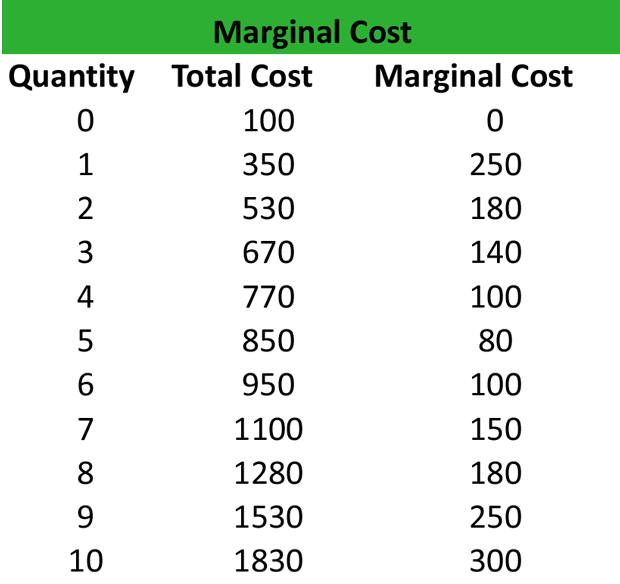Yo, y'all ever heard of marginal cost? What it means is how much it costs to produce one more unit of somethin'. So basically, if you wanna make more of a product, you gotta consider how much it's gonna cost to make each additional unit. Makes sense, right?
What is Marginal Cost?
So, let's break it down a little more. Marginal cost is the cost of producing one more unit of a product or service. It takes into account the cost of all the resources needed to produce that one extra unit. This includes things like labor costs, raw materials, and any other expenses associated with production.
Why is Marginal Cost Important?
Understanding marginal cost is important because it helps businesses make decisions about how much to produce and at what price. If the marginal cost of producing one more unit is very high, it may not be worth it to produce that extra unit if the price it can be sold for is not high enough to cover the cost. On the other hand, if the marginal cost is low, it may be profitable to produce more units.
Formula for Marginal Cost
The formula for calculating marginal cost is pretty simple:
Marginal Cost = Change in Total Cost / Change in Quantity

Example Of A Marginal Cost -
Let's say you run a business that produces T-shirts. You currently produce 1,000 T-shirts per week at a total cost of $10,000. Your fixed costs (the costs you have regardless of how many T-shirts you produce) are $2,000 per week.
If you add one more T-shirt to your production line, you have to pay an additional worker $100 per week. The cost of the extra raw materials needed to produce that one extra shirt is $10. Your marginal cost would be:
$110 / 1 = $110
This means it costs you $110 to produce one more T-shirt, taking into account the cost of labor and resources.

Marginal Analysis
Marginal analysis is the process of evaluating the benefits and costs of producing one additional unit of a product or service. This analysis helps businesses make informed decisions about how much to produce and at what price.
Determining the Optimal Production Level
The optimal production level is the level of production at which the marginal cost of producing one more unit is equal to the marginal revenue (the additional revenue gained by producing one more unit) from that unit. This is known as the profit maximization point.
Here's an example:
Let's say your business produces soccer balls. You currently produce 500 soccer balls per week and sell them for $20 each. Your total cost of production (including fixed costs) is $8,000 per week.
If you were to produce one more soccer ball, your total cost would increase by $9 and you could sell it for $20. Your marginal cost would be:
$9 / 1 = $9
Your marginal revenue would be:
$20 / 1 = $20
Since your marginal revenue is greater than your marginal cost, it would be profitable to produce one more soccer ball. You should continue to produce additional soccer balls as long as the marginal revenue is greater than the marginal cost.

Tips for Using Marginal Analysis
Here are a few tips for using marginal analysis to make better business decisions:
- Consider both fixed and variable costs when calculating marginal cost.
- Pay attention to changes in demand as you increase production.
- Consider the price point at which you can sell additional units before deciding whether to produce them.
- Don't forget to factor in the potential benefits of producing additional units, such as increased brand recognition or economies of scale.
Conclusion
So, there you have it - the basics of marginal cost and how to use it to make better business decisions. By understanding how much it costs to produce one additional unit of a product or service, and by comparing that cost to potential revenue, businesses can make smarter decisions about how much to produce and at what price.
Find more articles about Example Of A Marginal Cost


